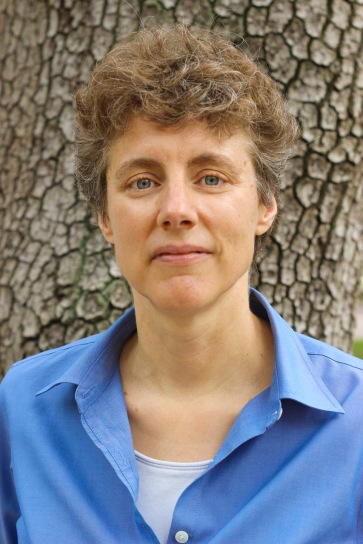Personal liberty vs the public good during a pandemic
Clare Palmer, the George T. and Gladys H. Abell Professor of Liberal Arts and Professor of Philosophy, tackles the big question of personal freedom and social responsibility in her interview with Scientific Inquiry.

 Clare Palmer is the George T. and Gladys H. Abell Professor of Liberal Arts and Professor of Philosophy. She is the author or co-author of four books, including Animal Ethics in Context (New York: Columbia University Press 2010), and has edited or co-edited a number of collections, including Linking Ecology and Ethics for a Changing World (Springer, 2014). She is also the author or co-author of more than 100 other publications, in journals ranging from the Journal of Applied Philosophy to The Veterinary Record and Trends in Ecology and Evolution.
Clare Palmer is the George T. and Gladys H. Abell Professor of Liberal Arts and Professor of Philosophy. She is the author or co-author of four books, including Animal Ethics in Context (New York: Columbia University Press 2010), and has edited or co-edited a number of collections, including Linking Ecology and Ethics for a Changing World (Springer, 2014). She is also the author or co-author of more than 100 other publications, in journals ranging from the Journal of Applied Philosophy to The Veterinary Record and Trends in Ecology and Evolution.
Bob Fischer teaches philosophy at Texas State University. He’s the author of Modal Justification via Theories (Springer, 2017) and co-editor of Modal Epistemology After Rationalism (Springer, 2017). He has also edited and written a number of books and essays on animal ethics.
What is the biggest ethical or philosophical question that has arisen as a result of the coronavirus pandemic?
The Covid-19 pandemic has raised challenging questions about the balance between protecting personal liberty and promoting the collective good. We are now in a situation where expressing normally morally acceptable personal freedoms (such as mixing freely with others, pursuing everyday activities, not wearing a face mask) can contribute to creating catastrophic threats to the wellbeing of others. How much should government constrain citizens’ otherwise-rightful activities to lower the risk very serious harms to others?
Why is it significant?
This issue is one of the central tensions of contemporary society. In the present moment, however, it’s especially significant for two reasons. First, people’s lives and wellbeing are at stake; if someone dies from a virus they would not have caught had another person chosen to wear a face mask, that’s a very serious avoidable harm. What’s more, those most likely to succumb to COVID-19 are frequently the vulnerable in society: individuals from communities of color (at risk due to disproportionate exposure to damaging air pollution), those who are already managing disabilities, those who are already impoverished, or the very old. So the stakes are high, and they are particularly high for already-marginalized populations.
But this situation is significant in second and broader way. As invisible threats go, COVID-19 has fairly immediate effects: we can watch the number of cases climb day by day; we can watch videos of the crises inside hospitals; we can read the stories of those who have suffered with, or ultimately succumbed to, the disease. Moreover, there are many people for whom the necessary protective measures are not enormously demanding: they just need to practice social distancing, wear face masks where social distancing is difficult, and stay home more than they normally would. (Obviously, the necessary protective measures don’t place equal burdens on everyone. The point here is just that there are some people for whom the ask isn’t that challenging.) Nevertheless, voluntary compliance has been patchy, and there’s been enormous resistance to the recommended changes.
This should give us pause when we consider a much larger catastrophe that currently — and increasingly — challenges humanity: climate change. Driving a gas-fueled truck instead of an electric sedan, kicking the air conditioning on high, flying thousands of miles for work or vacation: all these are pleasurable and convenient activities that people think they have a right to enjoy. But as with COVID-19, they increase the risk that others will be harmed, except that the others are even further away in time and space, and largely invisible to those contributing to the harms. Likewise, the most vulnerable will disproportionately include communities of color, the impoverished and the very old. So, if voluntary compliance is elusive when considering relatively immediate threats to relatively close others, there is little hope that voluntary compliance is going to be successful when considering (what at least appears to be) relatively distant threats to distant others. Our failures to address COVID-19 should be a warning to us we turn our attention to climate change.
How can it be addressed?
Covid-19 has taught us just how difficult it is for many governments to respond to major threats that are months, weeks, or even just days away, due to some combination of incredulity, national exceptionalism, politicization, incompetence, and understandable reservations to use the full force of their coercive powers. We may be entering a period, however, when countries will need to reassess their willingness to use the law to protect the most vulnerable and to advance the common good. While technological advances may make it easier to maintain common Western lifestyles in the face of climate change, there’s a crucial way in which the climate crisis differs from COVID-19: there’s no vaccine that will save us from the situation. And as we have seen with Covid-19, the more time that passes without action, the worse the problem and the greater the need for behavioral constraints in the future.
At this point, we can’t avoid many of the consequences of climate change. We can, however, avoid some of them, and perhaps a few of the worst ones. If we were all willing to change our own behaviors for the sake of others (and, increasingly, for the sake of our own futures) we wouldn’t need the coercive power of law. But there’s little sign that such behavioral changes will be forthcoming. So, we need policies that encourage, incentivize, nudge, and, most importantly, legally compel individuals, corporations, and the public sector to reduce greenhouse gas emissions. COVID-19 is a reminder that voluntary compliance will not save us from very real threats. Let’s remember that lesson when trying to tackle climate change.
IMAGE SOURCE: Creative Commons
Originally posted at Scientific Inquiry.
